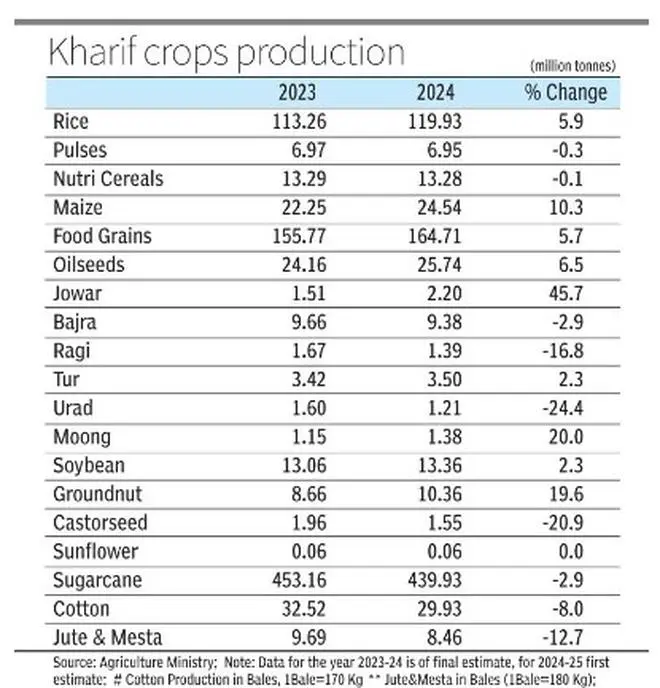India’s rice production in 2024 kharif season is estimated at 119.93 million tonnes (mt), which shows that the output has jumped by about 30 mt in the past decade alone. The rice output in the last kharif was 113.26 mt. This also reflects farmers’ growing preference for paddy crop when there is uncertainty over yield and prices of other crops, experts said.
According to Agriculture Ministry, which released first advance estimates of kharif crops on Tuesday, the area under paddy this year surged to record 43.37 million hectares (mh) from 40.73 mh year-ago. Though the last weekly update on September 27 had showed acreage of paddy at about 41 mh and a jump of only 1 mh from year-ago, the latest data showed the gradual shifting of the government towards technology infusion in collating crop data.
Digital survey
Businessline last month reported how the a digital survey threw up an unusual increase of over 6.5 mh in paddy area this year.
The Agriculture Ministry data showed that maize output is estimated at an all-time high of 24.54 mt for the 2024-25 kharif season as against 22.25 mt year-ago. The Ministry has pegged kharif season’s foodgrain (rice, pulses, nutri cereals and maize) production at 164.71 mt for 2024-25 from 155.77 mt in 2023-24.

Among other crops, pulses output is expected to remain almost flat at 6.95 mt against 6.97 mt whereas oilseeds production may marginally rise to 25.74 mt from 24.16 mt. India has been trying to become self-sufficient in pulses and edible oils as it is either top or second largest importer in the world in these two commodities.
At a time when the sugar industry has been seeking permits for export, the Ministry’s sugarcane production estimate will be a setback for the mills as the government may not take a risk when cane output has been projected to fall to 439.93 mt from 453.16 mt.
Cotton output is estimated lower at 29.93 million bales (of 170 kg each) against 32.52 million bales, while jute and mesta production may also fall to 8.46 million bales (of 180 kg each) from 9.69 million bales.




Comments
Comments have to be in English, and in full sentences. They cannot be abusive or personal. Please abide by our community guidelines for posting your comments.
We have migrated to a new commenting platform. If you are already a registered user of TheHindu Businessline and logged in, you may continue to engage with our articles. If you do not have an account please register and login to post comments. Users can access their older comments by logging into their accounts on Vuukle.